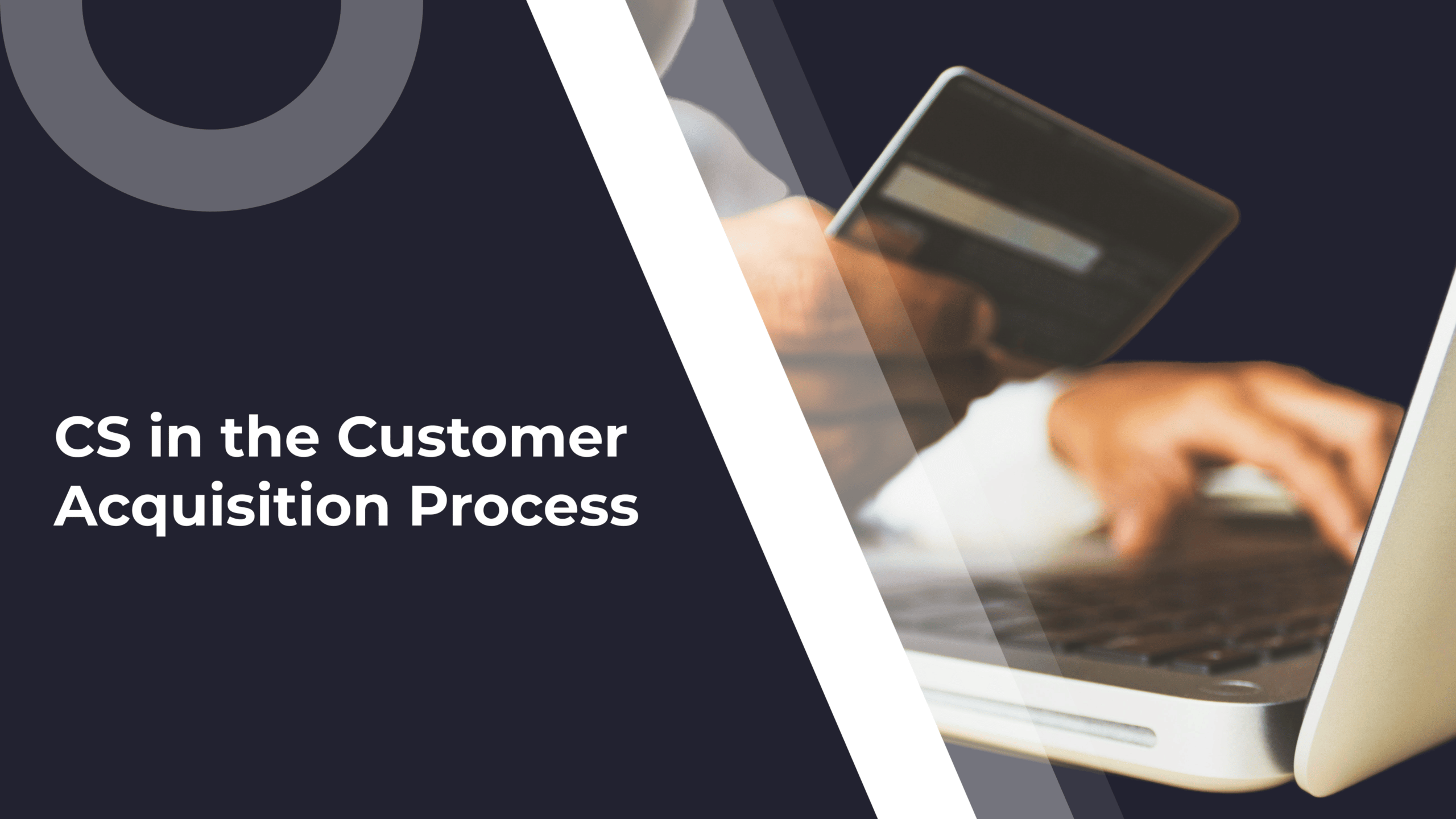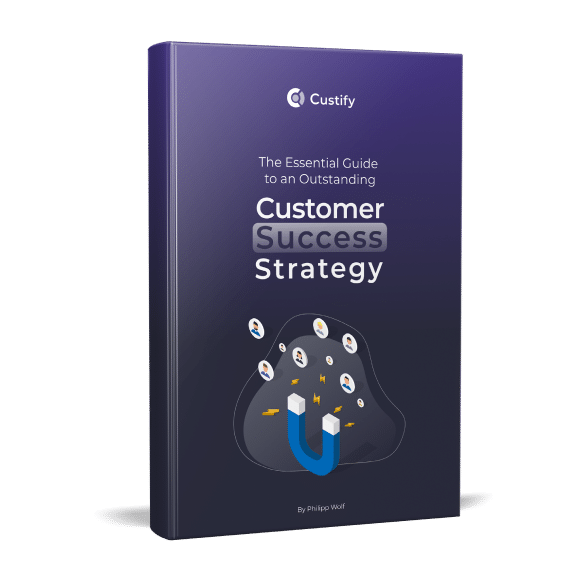Before we talk about customer escalations, let’s take a step back.
Ask yourself: what customer service quality do you expect from those you do business with?
Current customer service trends suggest expectations have changed dramatically over the past 5 years. According to Hubspot(1), 49% of consumers want their problems resolved on the first interaction, while over 70% are likely to switch to a competitor if there’s no empathy shown during a service interaction. Now do your expectations match these trends?
If they do, congrats – you have a good idea of where the market’s heading. If they don’t, consider your biases. And let’s check out together:
- What customer escalations mean and how they should be handled
- Their impact on customer service interactions and consumer behavior
- How to measure that impact across the different types of escalations
- Some surefire ways to ensure you handle escalations promptly and with professionalism
- How experts in the service and success space handle customer escalations
What Are Customer Escalations?
Customer escalations are complex customer service interactions that require a more skilled worker, agent, account manager, or customer success manager and are thus escalated to a one in order for their issues, requests, or support tickets to be resolved.
Common reasons for customer escalations include:
- Lack of experience
- Lack of proper authorization required to complete the fix
- Customer contract or SLA violations
- Repeated requests
- Unclear requests
- Customer escalation requests
What Is Customer Escalation Management?
Through escalation management, customer-facing teams (responsible for solving and forwarding escalations) prioritize customer requests based on criteria custom for each business (typically a mix of severity, account type, subscription tier, customer value, and other factors).
The main goals of escalation management are to reduce friction and customer churn, improve loyalty, lower time to resolution, and deliver valuable outcomes to customers.
Why Is Escalation Management Important? Benefits of a Proper Escalation Strategy
If the Hubspot metric cited in the intro is any indication, escalation management is vital in ensuring customers receive the level of service they expect. If you miss the mark by even a little, you might be missing out on better customer relationships and eventually, you might be faced with higher churn rates.
But there are plenty of other bright sides to escalation management too:
- Leads customers to the correct person
- Reduces time to resolution
- Reduces customer support load
- Improves team productivity
- Increases customer loyalty
- Leads to higher expansion rates
Types of Customer Escalations
To make it easier for you to operate strategically, you can divide all your customer escalation requests into four groups:
1. Functional / Technical Escalations
Functional or Technical escalations designate those support cases that fall outside of a support agent’s scope. The request might be too complex, the engineering know-how required might be too much, or you simply need assistance to ensure a 100% correct response that adheres to the SLA. These escalations usually go to another department, a designated technical support person, or a special escalation team or specialist.
Functional / technical escalations typically go to: technical support agents, technical account managers, customer success engineers, customer enablement managers, customer operations managers, customer support managers, customer success managers, and other technical functions.
2. Hierarchical / Managerial Escalations
Hierarchical or Managerial escalations happen when more seniority is required in a customer interaction. Most often, the customer is the one requesting to speak to a manager or person with higher authority in the organization.
Many companies, on the other hand, may implement hierarchical escalations automatically when signals show customer needs aren’t being met. In professional customer support organizations, such as call centers, it’s often the case that managers listen in on support interactions that go over certain thresholds and step in when they decide they can add value to the customer interaction.
Hierarchical / managerial escalations typically go to: customer support managers, senior customer service managers, customer success managers, senior customer success managers, customer success operations managers.
3. Automated / Scheduled Escalations
Automated or Scheduled escalations can apply to any of the other types of escalations on this list – as they are not mutually exclusive. An automated escalation simply means that support interaction is sent higher up automatically, when certain parameters are met. These requirements are typically heavily dependent on the SLA. SLAs present a legal requirement that a company offer a specific level of support, responsiveness, and that they resolve requests within a certain time frame. When those parameters are close to not being met, the customer support tool or customer success software will automatically escalate the issue.
Automated / scheduled escalations typically go to: customer support managers, senior customer service managers, customer success managers, senior customer success managers, customer success operations managers.
4. High-Priority / Urgent Escalations
High priority or Urgent escalations typically apply to mission critical and time sensitive support issues that require an urgent solution or a high level manager to step in. These requests can include major product issues, downtime, business service interruptions, and / or critical financial or legal issues. The specifics will depend on your organization, but they will always designate a potentially severe impact on the business and customer relationship.
High-priority / urgent typically go to: legal representatives, technical support managers, customer success engineers, senior customer success managers, senior stakeholders, director of customer success / service, VPs of customer success / service, chief customer officer.
Customer Escalation Matrix
These types of escalations can be assigned based on an escalation matrix – a practice common among dedicated customer support teams or contact centers. Escalation matrices typically include clear escalation paths depending on the severity of the escalation and the people involved.
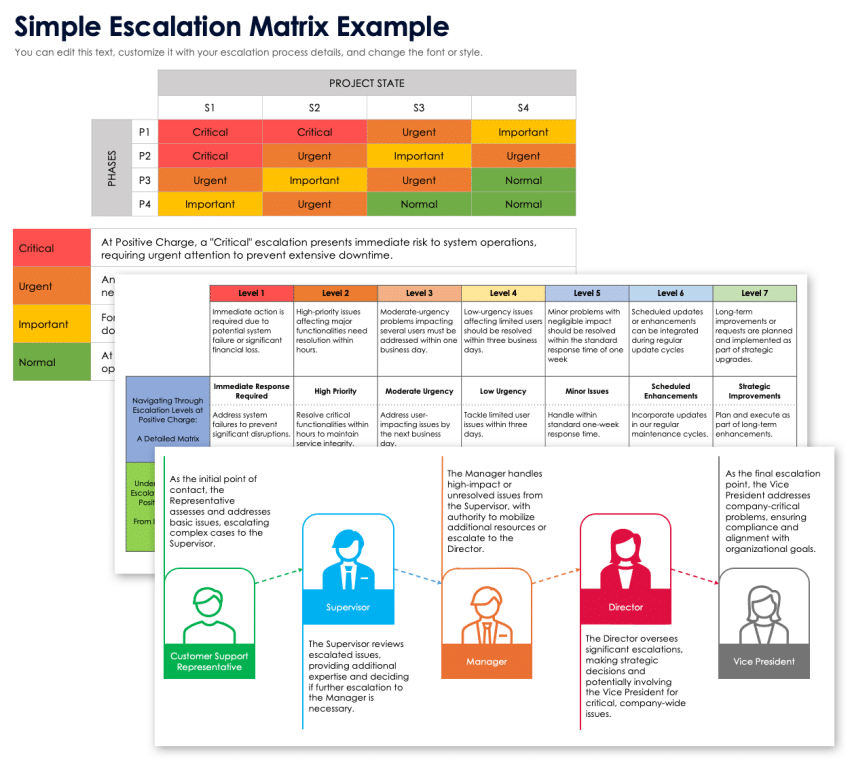
Customer Escalation Metrics
Typically, performance with regards to customer escalations means by looking at:
- Time to Resolution. 67% of customers expect TTR to be under 3 hours(1).
- Escalation Rate. Some online sources(2) place it at 5-10% for software, but if you look at telco, it can go up to 20%.
- Time to Escalate. The time it takes to escalate an issue to the appropriate person. This could mean the difference between good and poor customer service.
- CSAT.
- NPS.
- Escalation Repeats. Aka how many times an escalated issue repeats over a given period. If this number is high, that means your operational efficiency is low. You should adapt your processes so those particular issues automatically go to the correct person instead of being escalated to that person.
- Repeat Rate. The number of escalation repeats transformed into a rate.
1. Data from Hubspot’s State of Customer Service Report 2024.
2. Numbers cited by GetCensus with no other source attributed.
Best Practices of Customer Escalation Management
1. Conduct a Service Gap Analysis
We’ve been talking about the gap model for customer service for years, and here’s why: it works. Customer service, with all its reliance on empathy and EQ, can still be approached scientifically by actually obtaining all the datapoints you need to draw accurate conclusions.
The basic gap model helps you identify any inconsistencies between what customers want, what they think they want, what they actually need, and how you understand those needs, what you’re offering, and how you’re communicating.
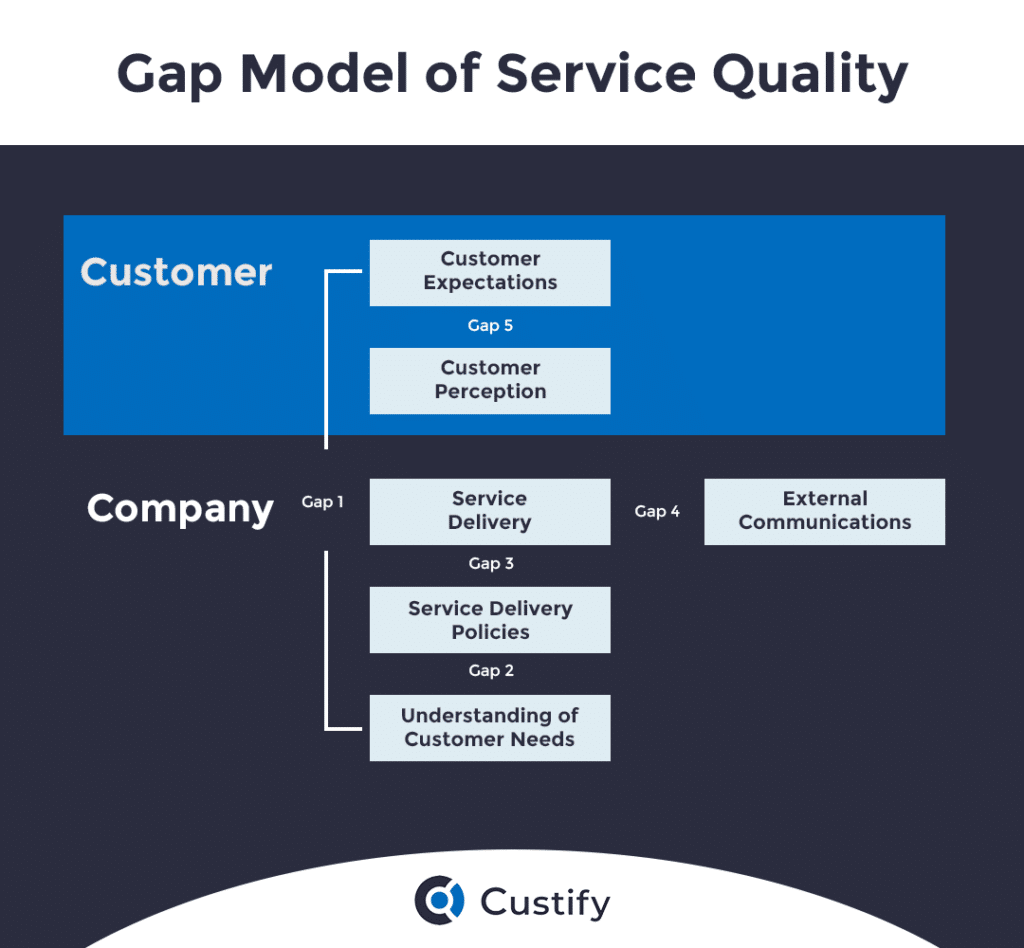
Read more: How to Run a Gap Analysis for Customer Service
All these gaps can lead to a lot of confusion and miscommunication, and conducting a gap analysis can help you reduce the load on support, eliminate unnecessary escalations, and improve your overall customer service experience.
2. Establish Your SLAs / XLAs
SLAs (Service-Level Agreements) have a storied history within the customer service space. In fact, recent trends show a shift towards XLAs (Experience-Level Agreements) that more correctly correspond to customer needs and deliver customer outcomes.
Whichever approach you go with, the bottom line is similar – you need to know the level of customer service and / or customer experience you’re targeting.
At the end of the SLAs / XLAs process, you should have written down:
- what constitutes an escalation (per type of escalation, see higher up in the article)
- how to manage customer escalations
- how to reduce customer escalations
- your customer escalations KPIs and outcomes, such as:
- Escalation Rate under 5%.
- Time to Resolution under 3 hours.
- CSAT average over 70%.
- NPS – over 68% promoters.
You’ll also identify mission-critical escalations and those that can have a severe impact on your business.
3. Work on an Escalation Management Strategy
Once you understand the level of service customers expect, the level of service you should provide, and how you should measure your performance, it’s time to put together a comprehensive customer escalation strategy. This boils down to four aspects:
- Prioritize customer escalations. This list of priorities will depend heavily on your business specifics, but you should know which escalations are critical, which customers are paying for a higher level of service, and how you can balance all the escalations that come in between all the customer-facing teams in your organization.
- Equip your team with the right tools. The next step in your strategy should involve your tech stack – i.e. ensuring your team has the right tools to identify, prevent, and handle escalations as you grow. Scaling is usually a big concern when it comes to handling escalations – so find tools that have higher plans available once you reach those milestones.
- Train your team to do the right thing. Of course, as many customer service professionals will know, training is vital to maintaining a good level of support for your clients. Even if you’re just starting out, you should make sure your team knows how to respond to customers and has scripts in place for the most common issues that reach the escalation point.
- Empower your team to act. Last, but maybe the most important, is making sure your team has full ownership of the tasks they can complete successfully. It’s a sign of poor customer service when hierarchical escalations happen purely because someone doesn’t have the correct credentials, authority, or company position to solve the customer issue, even if they have the capability to do so. Remember – good management empowers, poor management creates roadblocks.
4. Use Tools, Signals, and Automation to Solve Escalations
In a low touch or self service environment, ensuring customer escalations are resolved smoothly and in a timely manner is tricky, to say the least.
Fortunately, you have tools at your disposal to help:
- Automation helps by letting you set up flows with highly specific triggers – including customer escalations. Therefore, you can immediately get notified when customers are requesting escalations, allowing you to step in manually.
- Signals let you create notifications for specific user events. You can create specific alerts for escalations, as well as monitor common escalation precursors so you can act proactively and avoid them by helping customers before they escalate an issue.
Our customer success software is equipped with both automation capabilities and signals, giving you full control over how to handle customer escalations. Our CSMs stand ready to help you with setup and implementation so you never miss an escalation again.
5. Always Close the Loop
When handling customer escalations, particularly for high-touch or tech-touch customers, it’s important to remember your feedback loop strategy. What’s that? It’s simple: using customer feedback, including that which you get from escalations, to solve issues, improve your product or service, and finally, reach back out to the customer who initially sent you that feedback. Your goal is to check in, see how they’re doing, see whether your fix is working, and thank them for their help.
Follow ups are vital to regaining customer trust after an escalation.
Think about it – escalations can get very messy. Oftentimes there is miscommunication involved, there’s likely a big service gap happening, and everyone’s left feeling a bit confused and annoyed at the end. Your job as the CSM in charge is to mitigate that sense of unease and reassure customers by being a friendly voice that has their best interest at heart.
That’s where customer feedback loops play such a vital role – you’re taking customer care and turning it into a workable, scalable process for improving your business and customer loyalty.
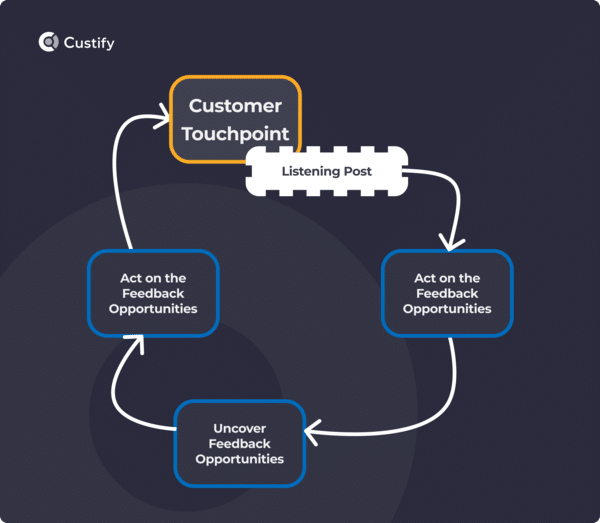
6. Prioritize Empathy Training and Emotional Intelligence
Above all, ensure whoever handles your customer escalations is able to respond with a great deal of empathy. When a customer interaction reaches that stage, the discussion can get particularly heated, complex, mired in technical details and subjectivity.
No matter how difficult it gets, remember to:
- Practice active listening. In this modern world, we can easily get distracted by a hundred things. Make sure that’s not you – keep focused on what the customer is saying, take notes if necessary to maintain that focus, and ask questions to reassure the customer you’re paying attention.
- Take customers seriously. No matter how obtuse customer requests can become, it’s not your job to judge them, but to reach an appropriate resolution.
- Respond with calm and empathy. Some customer interactions can be particularly unnerving, that’s why you need to train yourself to face difficult conversations and further prepare by having scripts in place. Scripts will help you stay calm as you’ll have something to rely on and fall back to if things go awry.
How Do Experts Handle Customer Escalations?
1. Foster trust through fast responses, active listening, and full ownership
The key to handling escalations is fast response, active listening, and full ownership. Escalations often come from a breakdown in trust, so showing up with transparency and consistency makes all the difference.
One example I encountered was when one of my customers escalated due to a broken data lineage in their tenant that affected critical deliverables we’d produce for their security compliance initiatives. I led the resolution, coordinated internally with our product and dev teams, and provided hourly updates to the customer. Within 8 hours, we shipped a fix—and the customer was appreciative for how quickly we took care of them and became even stronger advocates of us. It wasn’t just the solution, but how we handled the process that mattered.
– Shadman Rahman, Customer Success at Paramify
2. Work with a well-defined plan
I think there are several key attributes that are imperative to de-escalation.
- Empathy
- Active Listening
- Ownership
- Staying calm
- Transparency
- Top tier communication skills
- Problem solving mindset
In addition, as Shadman said, quickness is also key. Here’s what I have in my CS Playbook for best practices:
- Triage Quickly
- Engage the right internal stakeholders
- Create an action plan
- Document EVERYTHING
- Follow up consistently
- Debrief internally and externally after resolution
- Analyze trends
– Melissa Parry, Head of CX at TRUCE Software
3. Communicate frequently and set realistic expectations
For the customer-facing part, my general advice is that you need to communicate with the customer frequently, set realistic expectations, and provide useful information. It boils down to answering these questions for them:
- What’s happening?
- How does it affect me?
- What are you doing about it?
- When will it be fixed?
- What are you doing to prevent this from happening again?
For the internal-facing part, Engineering should be answering those same questions for you.
– Miles Goldstein, Executive Member, International LEAP Network
4. Be creative and encourage the team to learn from each other’s mistakes
I would add that the worst kind of escalation is the one that DOESN’T happen when it should. Taking the stink and stigma off of the act of escalation for CS team members is a huge part of making sure bad situations get treated properly. I try to instill 2 main things on this subject in my team members:
- Escalation is not a dirty word; it is a healthy and natural part of your role. That is what I am here for, so escalate early and often.
- When giving difficult news to a user/customer/client we often think of BAD news as the worst kind. This is untrue. The worst kind of news is NO news or INCORRECT news. BAD news is not a lie and supports accountability if not avoided. BAD news, if given well, can be trust-forming.
And, what does a Rubber Chicken have to do with learning from escalations you ask?
Learning from mistakes (that cause Escalations or make them worse) in CSM land often happens in silos, with the same mistakes and the same learning happening with each CSM over time.
To encourage team sharing about the mistakes and how they were managed or overcome, we decided to have a little fun. Enter the rubber chicken.
If you made a mistake that caused an escalation you were honor-bound to claim the rubber chicken and place it on your desk; you then used a corresponding Slack channel to share the issue and the resolution with the team.
– Matt Woodward, VP Client Success, Link Investment Management Inc
5. Have a simple process for difficult conversations
Carmel Granahan, Founder and Customer Success Lead at Unify Success, sent us this useful graphic her team made for handling complex escalations:
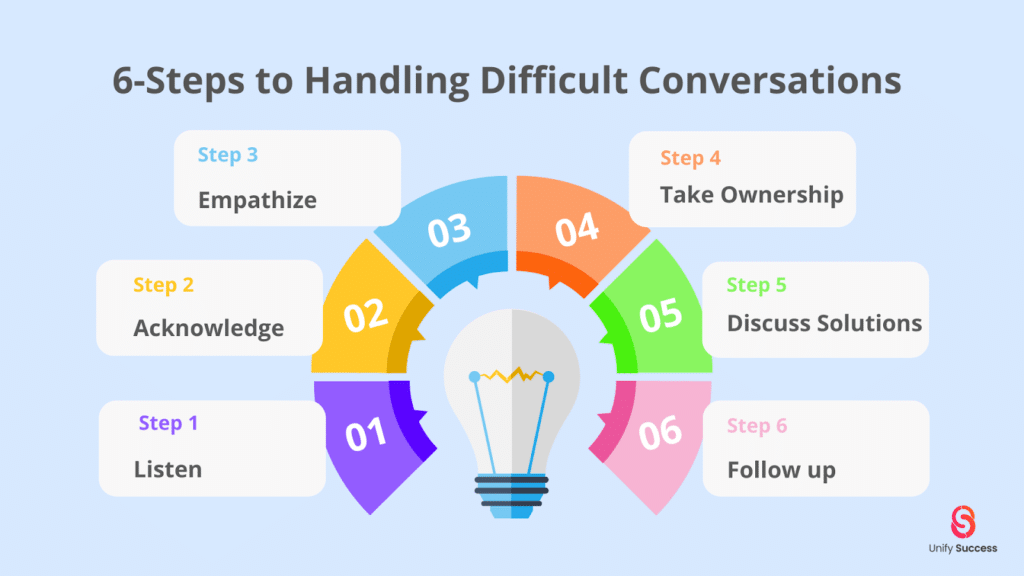
You can hear more about how Carmel manages CS in our webinar – Choosing the right tool for Customer Success.
6. Get buy-in to respond correctly, effectively, and swiftly
When it comes to escalations I like to have data to draw from and build upon. This could come in the form of support tickets, client-facing team stories/information, product utilization details, etc. but this serves as the foundation upon which to build plays to respond to specific types of challenges presented.
Within these plays you will likely want to draw from expertise in other areas of the business – Product, Marketing, Sales, Support, etc. to support in responses and engagements to de-escalate. Getting buy-in from those teams to support and respond as needed is key to ensure swift responses to resolve client challenges.
– Michael Raab, Founder & Principal Consultant, Raab Insight Consulting LLC
Escalations Are a Stepping Stone to Customer Growth
When dealing with customer escalations, remember that good resolutions can lead to happier customers and increased expansion. Simply being honest will yield better results than making empty promises you can’t deliver on.
To help you make the most of your customer interactions, the Custify team stands ready to assist you every step of the way through our top-of-the-line concierge onboarding process so you can go live sooner and take charge of your customers’ success.


